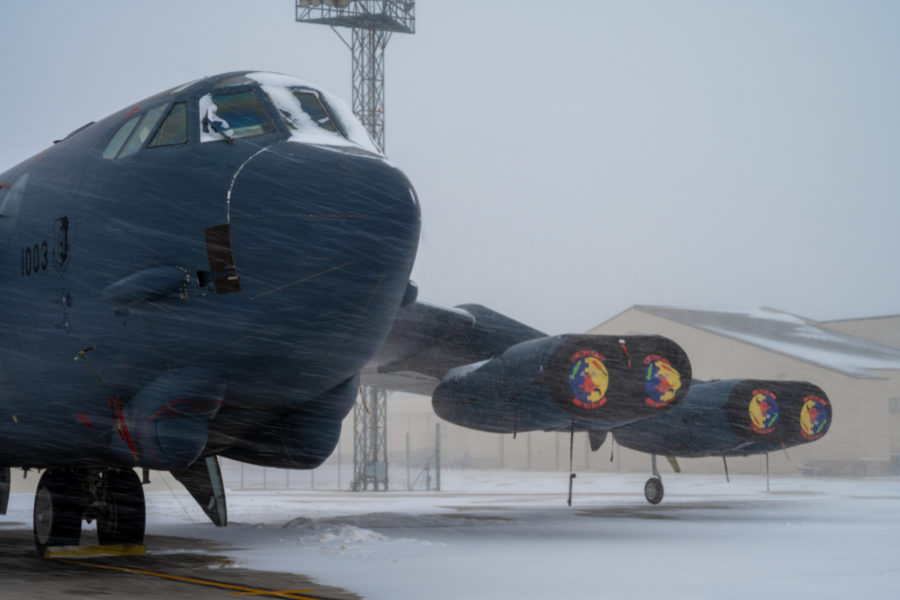From a nearby tornado to heavy snow to a closed runway, bases hosting the Air Force’s nuclear bomber fleet has dealt with a number of headaches in the past week.
Air Force Global Strike Command’s fleet of nuclear-capable bombers, including the B-52 Stratofortress and B-2 Spirit, are spread out across the continental United States, operating from Barksdale Air Force Base, La.; Minot Air Force Base, N.D.; and Whiteman Air Force Base, Mo.
With those bombers forming the air leg of the U.S. military’s nuclear triad, the Airmen who operate them are constantly ready and trained to act with the utmost care, according to the Department of Defense, making America’s nuclear force resilient in the face of any attack.
“So let us always ensure that the most dangerous weapons ever produced by human science are managed with the greatest responsibility ever produced by human government,” Secretary of Defense Lloyd J. Austin III said at the change of command ceremony for U.S. Strategic Command on Dec. 9.
But there are some things humans cannot control. Severe storms caused a tornado to touch down about 20 miles from Barksdale Air Force Base on Dec. 13. Another storm in North Dakota packed several inches of snow and ice onto Minot Air Force Base starting on Dec. 12. And the only runway at Whiteman Air Force Base remains closed as of Dec. 15, the result of a Dec. 10 incident in which a B-2 was forced to make an emergency landing.
Thus far, there has been seemingly no effect on essential operations, though.
A spokesperson for the 2nd Bomb Wing, which operates B-52s at Barksdale, told Air & Space Forces Magazine on Dec. 15 that no aircraft were moved due to the storm and no aircraft or facilities at Barksdale were damaged.
Minot Air Force Base did not immediately respond to a request for comment Dec. 15 when asked about the status of its flight operations, but on Facebook, the base told “care support” and “general support” staff not to report for duty on Dec. 14 or 15. Storm essential personnel—including the fire department, security forces, command post, medical facilities, snow control, and critical maintenance—and mission essential personnel are still being told to report to work.
The base remains under a blizzard warning issued by the National Weather Service that will expire Dec. 16—leaders are telling the public not to travel on roads on or near the base, but no damage has been reported.
A spokesperson for the 509th Bomb Wing at Whiteman Air Force Base did not have an update on when the base’s runway would reopen.
Severe weather has been a much more serious issue for America’s nuclear forces before. In 1952, two-thirds of the Air Force’s long-range strategic bombers of the period, B-36 Peacemakers, were damaged or destroyed when a tornado struck Carswell Air Force Base, Texas. The head of Stragetic Air Command Gen. Curtis Lemay ordered a large and urgent repair program called Project Fixit that got the almost all of the fleet back into service within a few weeks. Now, the Air Force often flies aircraft out of the path of oncoming severe weather, particularly when hurricanes are projected.
While Barksdale escaped without damage, the storms were nevertheless severe in the surrounding area. At least three people were killed in Louisiana, two in the tornado that touched down near Barksdale. Louisiana’s governor declared a state of emergency and the Louisiana National Guard said it is assisting in the disaster response.
